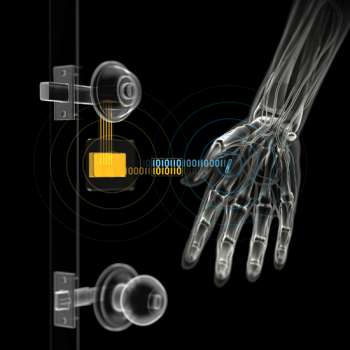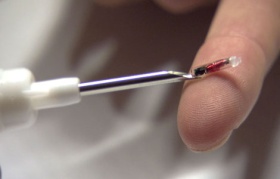Via tvnz.co.nz
 As someone who has turned microchipping himself into a hobby, Amal Graafstra is a pioneer of so-called DIY implantation.
As someone who has turned microchipping himself into a hobby, Amal Graafstra is a pioneer of so-called DIY implantation.
Graafstra implanted himself with two radio-frequency identification tags (RFIDs), similar to the sort of chips used in cats and dogs, five years ago.
The procedure was simple. The American IT department head bought the chips himself from a commercial outlet and a cosmetic surgeon inserted one through a scalpel cut in his left hand in March 2005.
His family doctor used a pet injector to insert the second one in his right hand later that year.
Unlike others who have implanted themselves for research, Graafstra, who was in Australia to address an international technology symposium at the University of Wollongong, says he did it for his own convenience.
The chips help him do things like open the door to his home, log onto his computer and start his motorbike.
“I have the skill to be able to utilise this technology in my daily life,” he says.
“It was basically a key replacement first and foremost.”
However, he admits he has been a ground-breaker.
“Pets have been getting implants of the same nature for many years,” he says.
“But in the non-commercial, private DIY space I’m the first person I know of who has used the technology in this way.
“This is kind of a do-it-yourself guerrilla-style approach to the technology.”
Graafstra doesn’t consider himself a cyborg, electrophorus or even homo electronicus – all terms that have been used to describe the new, microchipped breed of human.
However he says these terms all describe a future that humans are hurtling towards.
“I do not consider myself a cyborg because a cyborg is somebody that actually has a technological interface, something that interacts with the body like a pacemaker, or a cochlear implant,” he says.
 “All I’ve done is move the RFID tag from my wallet, or my pants pocket, to a skin pocket.”
“All I’ve done is move the RFID tag from my wallet, or my pants pocket, to a skin pocket.”
He prefers to describe himself as “an adventurous hobbyist” and “just a regular dude”.
And says he is no longer alone.
“When it got out on the news … several people contacted me and we started forming a little group and you can find people on YouTube having this procedure done.”
Several Australians are among those to have embraced the technology, he says.



